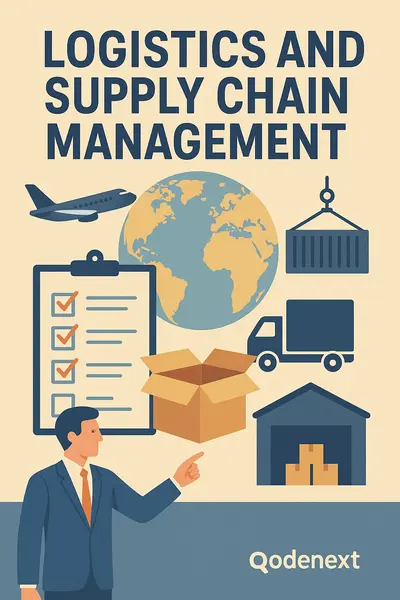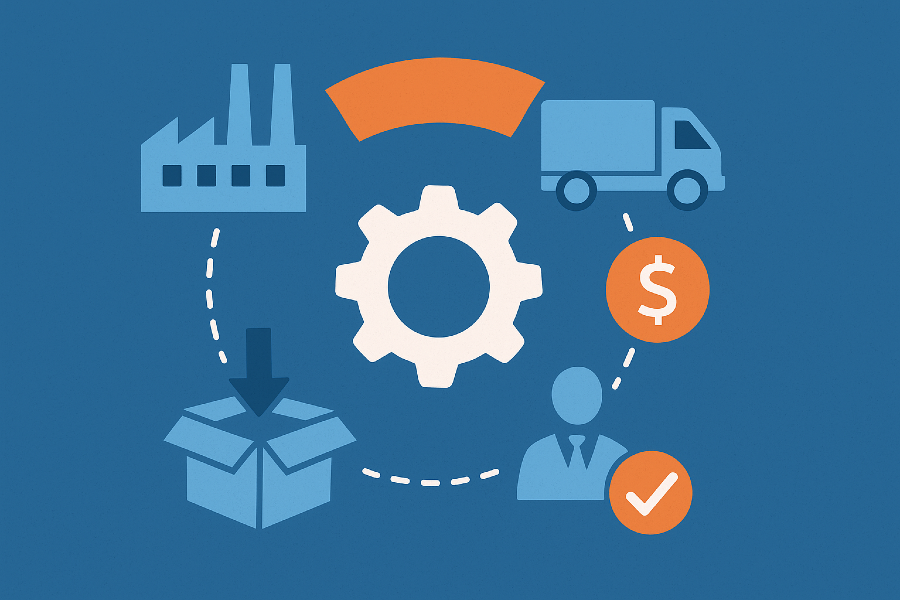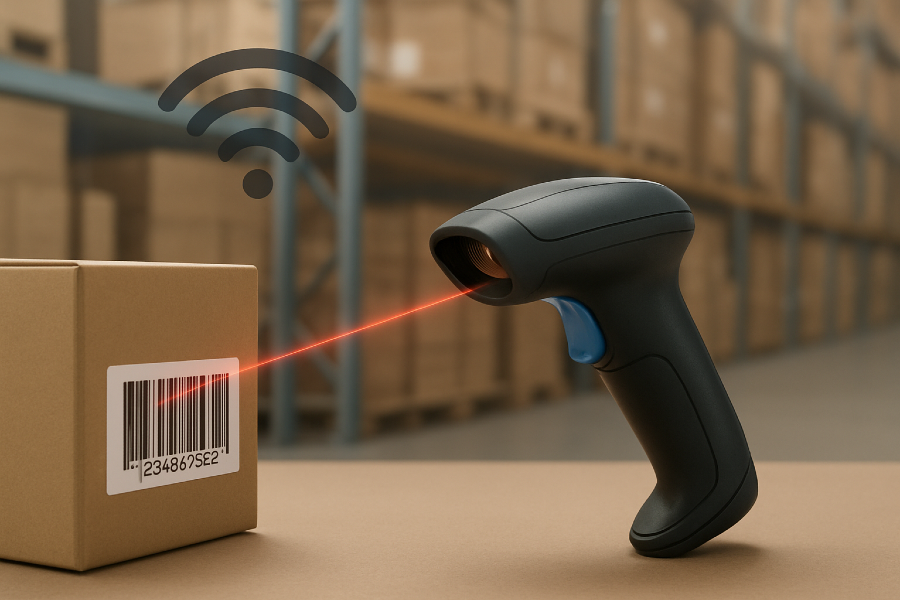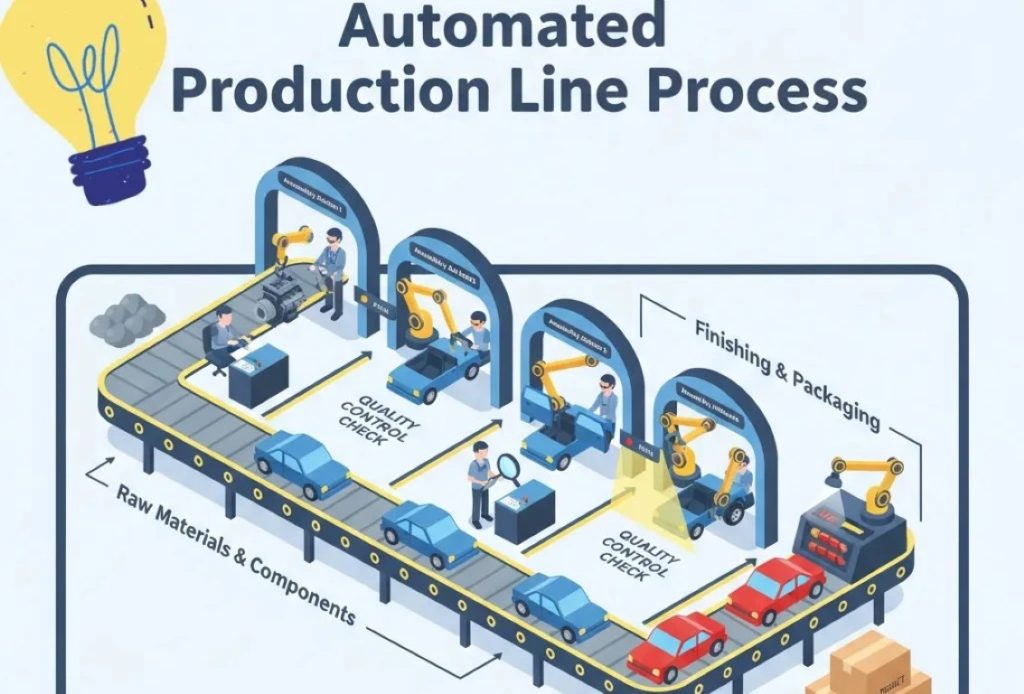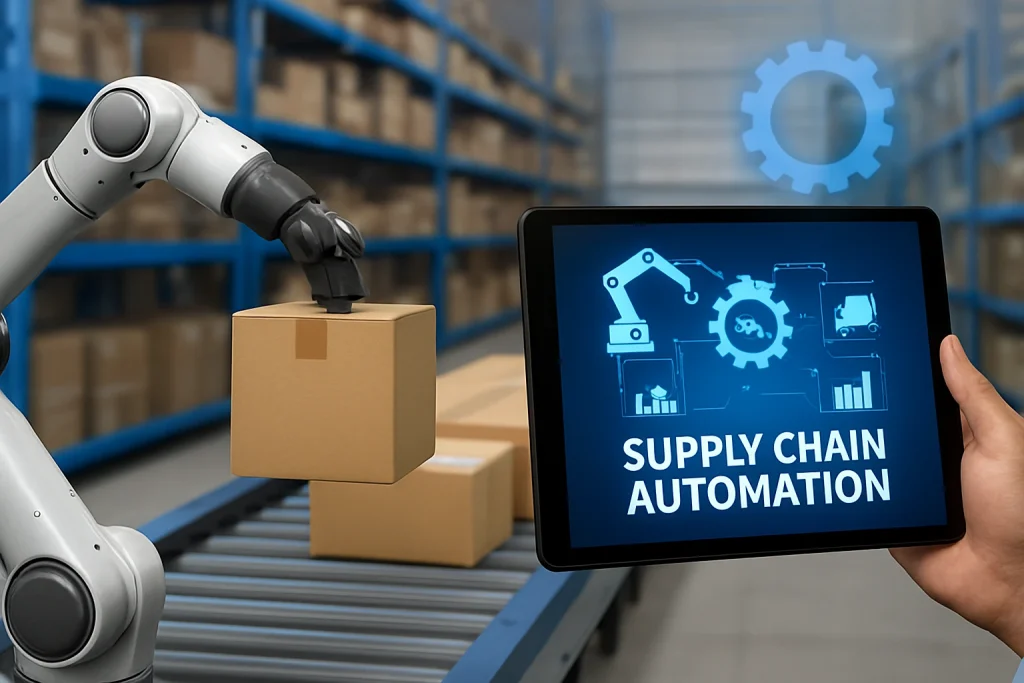Procurement is a huge part of retail marketing. This process includes sourcing, purchasing and managing the goods and services needed for retail operations. When it comes to retail marketing, procurement focuses on strategies. Such a retail procurement strategy depends on acquiring the right products and services to support the marketing campaign and drive business growth.
Retail marketers heavily rely on retail procurement to ensure they have the required strategies for implementing their marketing strategies effectively. This includes procuring products for promotion purposes, sourcing materials for creating content and acquiring tech solutions.
So, let’s see the detailed role of procurement in marketing. It can help marketers to make informed decisions optimising their procurement strategies for better results.
Major Phases of Retail Procurement Strategy
The crucial stages of retail procurement involve several steps integral to the procurement process’s success. These stages can differ depending on the specific requirements and needs of the business itself. However, the general outline of the steps looks like this:
Need Identification
The first stage of retail procurement involves identifying why there is a need for goods or services. Any of the different departments can initiate this- like inventory management, marketing or merchandising.
Supplier Selection
The next stage of retail procurement strategy oversees the potential supplier that provides the goods and services. There’s an evaluation of the suppliers on various factors like cost, quality, delivery times and sustainability.
Negotiation
Once you identify the potential suppliers, the procurement team is going to negotiate the terms and conditions with the chosen suppliers. This involves negotiating pricing, payment terms, delivery times and other relevant terms and conditions that may be needed.
Contracting
The procurement team is going to make contracts with chosen suppliers to come to a formal agreement. This will be done after all the negotiations are complete. The contract will have the terms and conditions of the agreement, as well as other pertinent details such as delivery schedules, pricing, and payment terms.
Order Placement
Once the contract has been signed, the procurement is going to place orders with the selected suppliers. The team is going to ensure that the orders are placed promptly. Also, the suppliers are aware of the pre-determined delivery schedules. Let’s see the last phase of the retail procurement strategy.
Delivery and Payment
The final stage is about managing the delivery of goods or services. This will ensure the payment is made to the supplier in a timely matter. The procurement team will oversee delivery schedules, validate receipt of goods or services and make payment by the agreed-upon terms.
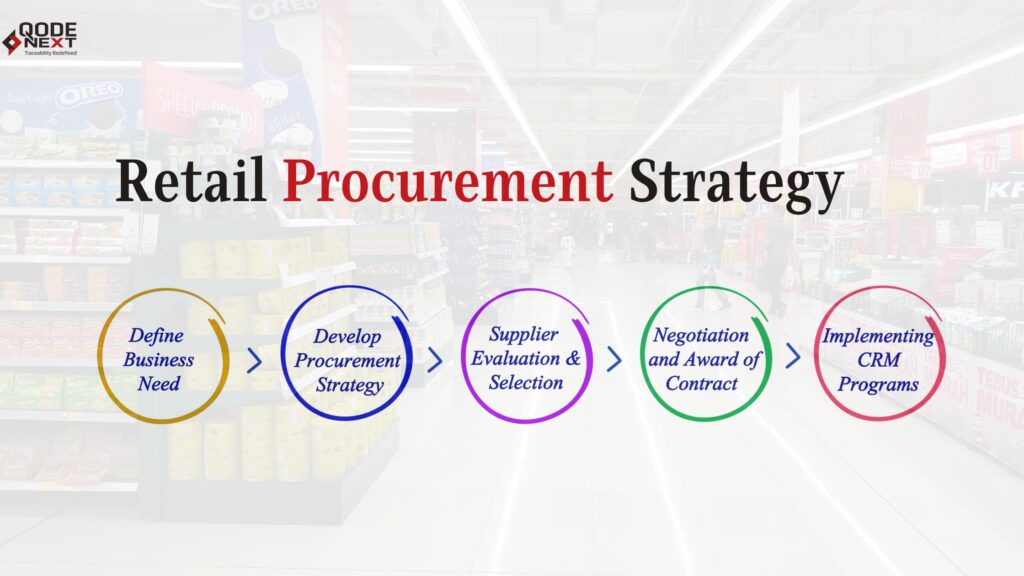
Key Objectives of Retail Procurement Strategy
A retail procurement strategy aims to streamline purchasing processes, ensuring optimal inventory levels and cost efficiency. It focuses on aligning procurement with business goals to enhance profitability and customer satisfaction.
Ensuring Product Availability
One of the most important objectives of a retail procurement strategy. It is significant to secure constant product supply. The provision of goods requires resource mobility and managing the fluctuating ratio between excess and scarce supply.
Retailers need to have a coordinated and corresponding approach to effective inventory management technology, e.g., forecasting models, and historical sales data to accurately predict demand.
Product availability refers to delivering the right number of products in the correct quantity and time. Besides attracting long-term customers, this strategy has a positive effect on the brand’s performance. This is what companies need to do when they have good supplier relations, they can then manage timely deliveries allowing for less risk of disruptions in the supply chains.
In the case of a highly competitive retail environment, consumers can switch their preferences quickly after a fad, so ensuring product availability with the difference between making a sale or losing it to a competitor.
Cost Efficient and Supplier Management
What is commendable is achieving cost efficiency along with managing supplier relationships. This is what makes a retail procurement strategy successful. Retailers are constantly looking to reduce costs without compromising on the products’ quality.
This means negotiating favourable terms with suppliers, bulk purchasing and leveraging economies of scale. Supplier management is more than just cost considerations. It means evaluating all suppliers based on their quality of goods, reliability and ability to innovate and adapt to the changes in the market.
It’s important to build strong, long-term relationships with suppliers that can; lead to better pricing, priority service and more flexible terms. Cost efficiency is more than just reducing expenses. It’s also about reducing expenses and optimising the value derived from each buck you spend. This ensures that the process contributes to the retailer’s overall profitability.
Ensure Quality Standards
It’s very important to maintain high-quality standards in procurement. It’s the backbone of customer retention and satisfaction. A retail procurement strategy must have rigorous quality checks to ensure that the products meet the expected standards.
This involves setting clear specifications for products, having regular inspections and working with the suppliers to address any quality issues.
Poor quality of products can mean reduced turnover, damage to the brand’s reputation and bad reviews. Therefore, quality management in procurement is best to ensure the perpetuation and product quality of the company. It’s about exceeding customer expectations and ensuring excellence.
3 Strategies of Retail Procurement Process and Supply Chain Management Optimisation
Strategic Sourcing and Negotiating Contract
For effective inventory management, it’s crucial to have strategies for strategic sourcing. To do so, companies need to identify the best suppliers across the globe and negotiate contracts promoting efficiency and cost reduction.
The purpose of this is twofold: ensure availability of the required materials and reduce purchase costs. Proper contract negotiation must include contingency management clauses and flexibility, thus making space for reactivity when there are market fluctuations.
List of Important Elements in Contract Negotiation
- Clear definition of hardware requirements
- Choosing trustworthy and efficient suppliers
- Establishing clear delivery terms with penalties for non-compliance
- Negotiating competitive pricing
- Including contract revision clauses for integration
To summarise:
| Impact | Description |
| Cost Reduction | Decreasing expenses through volume and price agreements. |
| Better Quality | Improving the input via rigorous supplier selection |
| Increased Flexibility | Adapting to demand changes and emergencies. |
Optimising Supply Chain Logistics
Optimising supply chain logistics is an important part of inventory management. It includes upgrading procedures for transportation and distribution. This ensures that raw materials and finished goods reach their destination economically and efficiently.
With the help of advanced technologies, companies can track and optimise supply chain efficiency measures for delivery to minimise delays and costs.
List of Key Logistics Tech
- Supply chain management software (SCM)
- Advanced GPS for vehicle tracking
- Predictive analytics for anticipating delays
- Integrated Transport Management Platforms (TMS)
To summarise:
| Benefit | Description |
| Reduced Costs | Better route planning reduces transportation costs |
| On-Time Delivery | Punctual deliveries ensure increased customer satisfaction |
| Fewer Unexpected Events | Fewer road incidents can help with better planning and monitoring. |
Proactively Managing Product Returns
Another crucial facet of optimising inventory management in supply chains is managing returns. This process needs proactive management for minimising costs and environmental impact. It’s best to implement clear return policies so companies can put returned products back into stock or recycle them.
Best Practices for Managing Returns:
- Establishing a clear product return policy
- Using ERP systems to manage reduced inventory
- Collaborating with recycling partners
- Staff training for those in returns management
| Benefits | Description |
| Optimised Costs | Minimize losses by improving product reintegration into inventory. |
| More Customers Satisfied | Boost trust and customer satisfaction with strong return policies. |
| Reducing Environmental Impact | Reduce waste through effective recycling and efficient restocking. |
FAQs: Optimising Inventory with Retail Procurement Strategy
Can a supply chain be both efficient and responsive?
Yes, it can do so by balancing cost efficiency in supply chains with agility, using flexible processes, strategic inventory management and advanced technology to adapt to market changes quickly.
What are the four types of procurement?
The types are direct procurement (getting raw materials for production), indirect procurement (getting goods and services for daily operations), services procurement(contracting external services) and strategic procurement (long-term supplier partnerships).
How does procurement deal with supply chain bottlenecks?
Procurement processes solve this problem by diversifying suppliers, enhancing communication, implementing strategic inventory management, negotiating flexible contracts, using technology for real-time tracking and forecasting.
Conclusion
Optimising inventory through the retail procurement strategy helps to achieve cost efficiency, ensuring product availability and maintaining quality standards. By leveraging advanced logistics and proactive return management, retailers can streamline operations and boost profitability. Ready to enhance your supply chain? Partner with Qodenext for innovative solutions that drive success. Contact us today!

